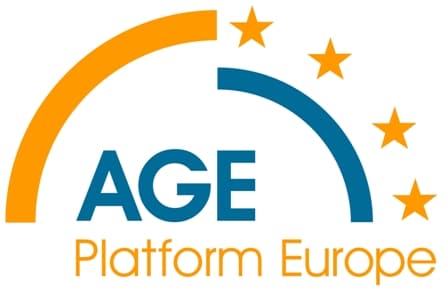
AGE highly welcomes the report which points on many issues that lead to an imbalance between women and men and an increased risk of poverty of older women.
Gender pension gap as a product of ‘ill functioning labour markets’

The Commissioner Carlos Moedas, who represented the Commissioner for Justice Vera Jourova, highlighted the actions it has taken by presenting a package on work-life balance in April, which tries to address women’s under-representation in the labour market, including through a care leave. The Commission also ensured it will be vigilant on the shift towards a multi-pillar system and its effect on pension adequacy for current older women.
The resolution calls for a strategy to put an end to the gender gap in pensions, by establishing guidelines from the European Commission and working together with member states. It supports a call for a strategy for equality between women and men for 2016-2020 and to link it to the Europe 2020 Strategy.
Role of pensions for fighting social exclusion highlighted
The resolution acknowledges that while the gap in pensions stands at 38.3%, between 11% and 26% of women in the EU have no pension entitlements at all and calls these disparities ‘unacceptable’. The Parliament highlights that pension policies have the aim to ensure economic independence and that they should prevent social exclusion by guaranteeing active social, cultural and political participation. The Parliament notes that the pension gap is larger for pensioners between 65 and 75, rather than 75 and above because of the impact of survivor’s pensions on widows, but also notes that the risk of poverty and social exclusion is high for older women (20.2% compared to 14.6% for men) and that it increases with age, reaching 30% in most member states.
Calls for a gender assessment of pension reforms
The resolution takes note of the development towards more individual responsibility in pension savings has a stronger impact on women and called for increased support for financial literacy and for the application of the directive 2004/113 prohibiting gender discrimination in the access to goods and services to be applied to pension insurances by using unisex tariffs. The Parliament calls for putting in place poverty-preventing measures for workers whose health does not allow them to work until legal retirement age. It called for more systematic monitoring of the gender pension gap and the effects of reforms on women’s well-being and an assessment of member states’ pension systems in view of their capacity to promote gender equality in old age. It also called for more information provided to citizens on the impact of lost contribution periods on pensions.
A better system for the distribution of care needed
The resolution highlights that a root cause of the gender pension gap is the unequal distribution of care work, both childcare and care for family members in need for long-term care and assistance. The resolution therefore emphasises the role of pension credits for caring tasks as a possible way to improve gender equality in pension systems and calls for them to be established by member states. The Parliament recognises informal care as a fundamental pillar of society carried out mainly by women. It commends the Commission’s initiative to create a right to request flexible and smart working to support work-life balance and the proposal for carer’s leave. It encourages pooling of good practices in this area by member states. It also calls for local, high-quality, affordable and accessible care facilities for children and older people and for public investment to be directed into these services, especially in rural areas. It also calls for defining targets for long-term care servies.
Promotion of employment of women
The resolution notes the efforts made in increasing employment rates for women, but takes stock of the persisting gender pay gap and differences in employment rates and working time distribution between women and men. It calls for more investment in schools, pre-school education and care for older people to create better work-life balance policies that create jobs and helps women gaining and staying in high-quality employment. The Parliament condemned gender discrimination in employment as an infringement of Directive 2006/54 and called for better implementation of this directive.

For more information, please contact Philippe Seidel Leroy at the AGE Secretariat: philippe.seidel@age-platform.eu
More information:
- European Parliament resolution of 14 July 2017 on the need for an EU strategy to end and prevent the gender pension gap
- European Institute for Gender Equality, Gender gap in pensions: Research note to the Latvian Presidency
- European Parliament Policy Department: Gender gap in pensions: Looking ahead
- European Parliament Policy Department: The Gender Pension Gap: Differences between mothers and women without children
- European Council: Council conclusions on equal income opportunities for women and men: closing the gender gap in pensions






